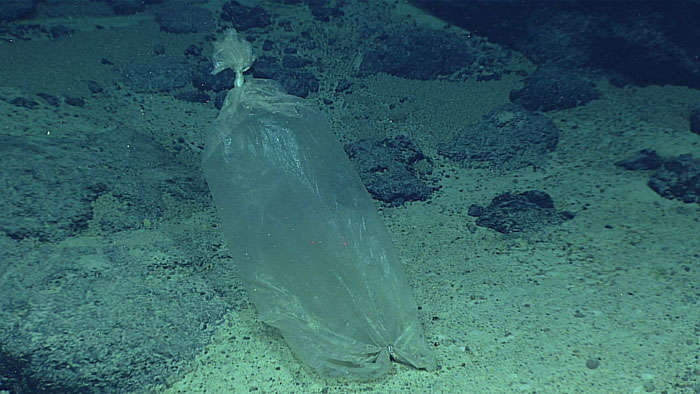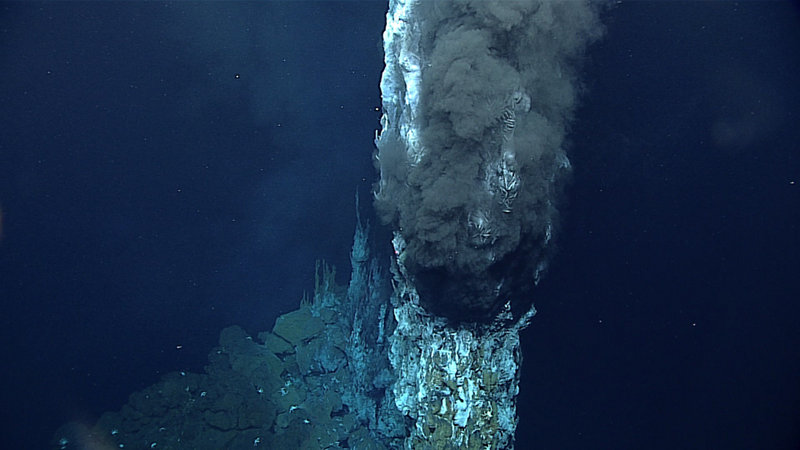How Deep is the Ocean?
Published by Ocean Conservancy
Would you believe that more people have been to the moon than have explored the deep, DEEP sea? It’s true! The mysteries of the deepest parts of the ocean have fascinated scientists for centuries and yet, we’ve only explored a small fraction.
These areas are defined as being 20,000 feet or more below the surface and are aptly called “hadal zones,” after the Greek god of the Underworld, Hades. And I understand why—how on earth could any life be able to withstand the immense pressure and lack of light? Imagine having to balance 100 blue whale tongues on your head…in the dark!
It’s currently estimated that there are 46 of these hadal ecosystems across the ocean. The majority of these are classified as “trenches” and are formed when tectonic plates collide. With increasing research and new technologies developing every day, we’re continuously learning more about these fascinating areas.


6.2 miles (10,047 meters) deep—Kermadec Trench
The Kermadec Trench made headlines in 2017 after an unmanned research vessel, Nereus, imploded from the high pressure about 10,000 meters down. This trench in the South Pacific acts as a biodiversity hotspot, with large volcanoes and hydrothermal vents inhabited by species found nowhere else. Previous research expeditions have found large numbers of amphipods, crabs and shrimp.
6.5 miles (10,500 meters) deep—Kuril-Kamchatka Trench
Located in the northwest Pacific ocean, the Kuril-Kamchatka Trench is known for rich marine fauna, including small crustaceans belonging to the superorder Peracarida, and seabed volcanic activity. In a 2014 study, the German-Russian expedition KuramBio found evidence of plastic debris—including fishing nets, packaging and microplastics—showing that humans are affecting even the deepest ocean.


6.5 miles (10,540 meters) deep—Philippine Trench
The Philippine Trench, also known as the Mindanao Trench, is located near the Philippine Sea and stretches along the east coast of the Philippines. The trench is the youngest of the five trenches at eight to nine million years old and has frequent volcanic eruptions. The Philippine Trench and surrounding area also contain large deposits of heavy hydrogen, an element useful in nuclear and environmental sciences and biochemistry.
6.8 miles (10,882 meters) deep—Tonga Trench
The Tonga Trench is found in the southwest Pacific around New Zealand’s North Island and the island of Tonga. The deepest part here is known as the Horizon Deep; the trench sees extreme tectonic activity, which leads to frequent underwater earthquakes. A large community of roundworms can be found here along with a diverse species of amphipods (tiny crustaceans). Additionally, the Tonga Trench is where aborted space mission Apollo 13’s Radioisotope Thermoelectric Generator (RTG) fell. Although the RTG contains plutonium, the U.S. Department of Energy has found no spike in radiation levels in the trench.
6.9 miles (11,033 meters) deep—Mariana Trench
The Mariana Trench is considered to house the deepest known point of the ocean, dubbed the Challenger Deep. Using sound pulses, the National Oceanic and Atmospheric Administration (NOAA) was able to estimate just how far the Mariana Trench descends. Located in the Western Pacific, near Guam, the Mariana Trench falls under U.S. jurisdiction and was established as a Marine National Monument in 2009. After some studies, including a voyage by film director James Cameron (Titanic, Avatar) in 2012, we have been able to identify a wide range of active life in the dark depths. Flatfish, large shrimp, snailfish, amphipods, sea cucumbers and even jellyfish have been spotted in the Mariana Trench.


Freezing temperatures, complete darkness and extreme pressure may seem like all the ingredients for doom and gloom; however, voyages and research vessels show thriving deep ocean communities.
There is still so much to learn from organisms of the deep trenches, including discovering opportunities for new antibiotics and medicines, but as levels of pollutants continue to rise, and other threats from activities like deep sea mining begin to materialize, there is a risk that this valuable information—and the remarkable life that hosts it—will be lost.
Sign up for our emails!
The post How Deep is the Ocean? appeared first on Ocean Conservancy.
Read the full article at: https://oceanconservancy.org/blog/2019/03/12/5-deepest-parts-ocean/


